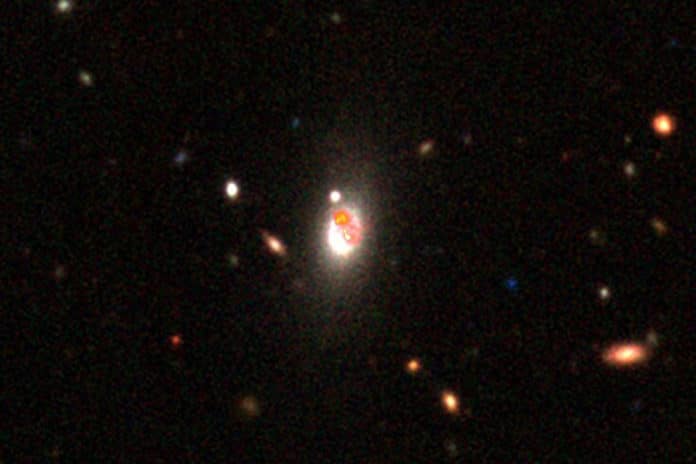Astronomers have recently published the most comprehensive images seen of galaxies beyond our own yet. These images were created from data collected by the Low-Frequency Array (LOFAR). Also, these images made possible because the international nature of the collaboration pushes the boundaries of what we know about galaxies and supermassive black holes.
These most detailed-ever images of galaxies come from the team’s years of work, led by Dr. Leah Morabito at Durham University.
The LOFAR network captures images at FM radio frequencies. Some regions of the universe appear dark to the human eye. But, the same region glows brightly in radio waves, allowing astronomers to look into star-forming regions or the heart of galaxies themselves.
Thanks to these new images, astronomers could see inner-workings of nearby and distant galaxies at a resolution 20 times sharper than typical LOFAR images. Using the signals from all of the European antennae, the team has increased the diameter of the ‘lens’ to almost 2,000 km, which provides a twenty-fold increase in resolution.
Dr. Neal Jackson of The University of Manchester said, “These high-resolution images allow us to zoom in to see what’s going on when supermassive black holes launch radio jets, which wasn’t possible before at frequencies near the FM radio band.”
The team’s work forms the basis of nine scientific studies that reveal new information on the inner structure of radio jets in a variety of different galaxies.
LOFAR is a network of more than 70,000 small antennae spread across nine European countries. The results come from the team’s years of work, led by Dr. Leah Morabito at Durham University. The team was supported in the UK by the Science and Technology Facilities Council (STFC).
Journal References:
- F. Sweijen et al., High-resolution international LOFAR observations of 4C 43.15. Spectral ages and injection indices in a high-z radio galaxy, Astronomy & Astrophysics (2021). DOI: 10.1051/0004-6361/202039871
- L. Morabito et al., Sub-arcsecond imaging with the International LOFAR Telescope. I. Foundational calibration strategy and pipeline, Astronomy & Astrophysics (2021). DOI: 10.1051/0004-6361/202140649
- N. J. Jackson et al., Sub-arcsecond imaging with the International LOFAR Telescope. II. Completion of the LOFAR Long-Baseline Calibrator Survey, Astronomy & Astrophysics (2021). DOI: 10.1051/0004-6361/202140756 P.
- Kukreti et al., Unmasking the history of 3C 293 with LOFAR sub-arcsecond imaging, Astronomy & Astrophysics (2021). DOI: 10.1051/0004-6361/202140814
- R. Timmerman et al., Origin of the ring structures in Hercules A. Sub-arcsecond 144 MHz to 7 GHz observations, Astronomy & Astrophysics (2021). DOI: 10.1051/0004-6361/202140880
- S. Badole et al., High-resolution imaging with the International LOFAR Telescope: Observations of the gravitational lenses MG 0751+2716 and CLASS B1600+434, Astronomy & Astrophysics (2021). DOI: 10.1051/0004-6361/202141227
